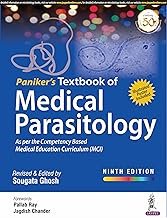Disclaimer: This post is for academic purposes only. Please read the original document if you intend to use them for clinical purposes.
This document summarizes the “National Treatment Guidelines for Antimicrobial Use in Infectious Disease Syndromes” (Version 2.0 published in July 2025) , developed jointly by the National Centre for Disease Control (NCDC) and the Indian Council of Medical Research (ICMR). These guidelines are a critical update to previous editions (2019, 2017, 2016) and are designed to address the growing threat of Antimicrobial Resistance (AMR) in India. They aim to standardize empiric antimicrobial therapy for common infectious disease syndromes, ensuring timely and appropriate patient management while awaiting laboratory results. A core principle emphasized throughout the document is the necessity of sending appropriate clinical samples for culture and Antimicrobial Susceptibility Testing (AST) before initiating empiric therapy, and subsequently de-escalating to pathogen-based targeted therapy once results are available. The guidelines cover a vast array of infectious syndromes across various body systems, special populations, and healthcare settings.
Key Themes:
A. Antimicrobial Resistance (AMR) as a Global Health Threat
- Magnitude of the Problem: AMR is identified as a major global health threat, with the Global Burden Disease study (2021) linking 4.71 million deaths to bacterial AMR, including 1.14 million directly attributable deaths.
- Socio-economic Impact: AMR disproportionately affects low- and middle-income countries and poses significant risks to routine medical procedures, cancer treatments, and surgeries due to the emergence of multi-drug-resistant organisms (MDROs), commonly referred to as ‘superbugs‘.
- Drivers of AMR: The primary drivers are misuse and overuse of antimicrobials.
- Multidisciplinary Approach: Tackling AMR requires a multidisciplinary approach, including infection prevention (WASH and IPC practices), universal access to quality diagnostics, and appropriate treatment based on laboratory investigations and antimicrobial stewardship.
- National Strategy: India’s updated National Action Plan (NAP) on AMR (2025-2029) includes strengthening laboratory capacity and optimizing antimicrobial use, with the revision of these treatment guidelines being a key activity.
B. Principles of Antimicrobial Stewardship and Prescriptions
The guidelines strongly advocate for responsible antimicrobial use, outlining a structured approach to prescription:
- Clinical Diagnosis First (Step 1): Emphasizes the importance of a detailed history and physical examination to formulate a presumptive diagnosis and suspect causative agents, rather than relying solely on non-specific lab tests. It also stresses the need to correlate clinically before initiating or modifying therapy.
- Etiology and Resistance Patterns (Step 2): Clinicians must consider possible sources of infection, identify microbial pathogens, and review local resistance pattern based on institutional antibiogram.
- Limiting Empiric Therapy (Step 3): Empiric antibiotic therapy is ONLY recommended for a select group of patients with severe infections (e.g., Febrile neutropenia, Severe sepsis and septic shock, Community acquired pneumonia, Ventilator associated pneumonia, Necrotizing fasciitis, Meningitis), and after sending appropriate clinical samples for culture and AST. The mantra is to “start smart” and then de-escalate.
- Appropriate Antibiotic Selection (Step 4): Selection should be based on the antibiotic’s spectrum, considering resistant patterns, correct dose, route, duration, and adequate tissue penetration. Optimization of Pharmacokinetics-Pharmacodynamics (PK-PD) parameters and extended infusions for β-lactams in sick patients are also highlighted.
- De-escalation and Targeted Therapy (Step 5): This is a critical step, involving modifying broad-spectrum antibiotics based on culture and AST results. Key actions include:
- Stop polymyxins and glycopeptides if no carbapenem resistant organisms (CRO) or methicillin resistant Staphylococcus aureus (MRSA) identified on cultures.
- Avoid double or redundant gram negative or anaerobic coverage.
- Discontinuing antibiotics if a non-infectious etiology is identified.
- Changing from broad-spectrum to narrow-spectrum antibiotics, and IV to oral.
- De-escalation is safe in all patients including febrile neutropenia and septic shock and reduces mortality and length of hospital stay.
C. Structure and Application of the Guidelines
- Comprehensive Coverage: The guidelines cover a wide range of infectious disease syndromes categorized by body systems (e.g., Cardiovascular, CNS, GI, Respiratory, Urinary, Gynaecological, ENT, Oral, Skin, Musculoskeletal, Ocular), as well as specific contexts (Febrile Syndromes, Toxin-mediated, Bite Wounds, Burn Wounds, Dental, Immunocompromised Hosts, Healthcare Associated, Neonatal Infections).
- Empiric Focus: The guidelines aims to guide the empiric use of antimicrobials where the severity of infections mandate initiation of antimicrobials before culture and antimicrobial sensitivity results are available.
- Local Adaptation: These are general guidelines and primarily cater to places which do not have their local hospital/institute antibiotic policy. Institutions are encouraged to develop/formulate institutional antibiotic policy based on this framework and Local antibiograms may be used to modify these recommendations.
- Patient-Centric Considerations: Factors like age, physiological state of the patient (e.g. pregnancy and lactation), organ function (e.g. renal or hepatic function), genetic variation (e.g. G6PD deficiency), allergy or intolerance must be kept in mind while prescribing antimicrobial therapy.
- Non-Antibiotic Management: Not all patients need antibiotics; in many cases only symptomatic management may be suitable and this has been emphasized in these guidelines.
- Continuous Review: The content will undergo a process of continuous review.
- Disclaimer: The guidelines provide suggestive guidelines and should NOT supplant clinical judgment, factors like hemodynamics of specific patients, availability of antimicrobials and local antibiogram of the healthcare setting.
Recommendations:
A. General Management Principles
- Specimen Collection: Before initiating the empiric therapy given in these guidelines appropriate clinical samples must be sent to the laboratory so that once the laboratory results are available, pathogen based targeted therapy must be initiated.
- Duration of Therapy: Emphasizes that antibiotics should only be prescribed when necessary for a definitive diagnosis and the benefit-risk ratio should be considered, especially in pregnancy.
B. Febrile Syndromes
- Acute Undifferentiated Febrile Illness: Recommends deferring investigations/antimicrobials on Day 1-2 of fever onset. Investigations escalate after Day 3-4 and Day 5, including blood cultures and serology for specific endemic diseases.
- Enteric Fever: Blood culture remains the gold standard. Avoid Widal test. Empirical use of fluoroquinolones should be avoided due to high resistance.
- Pyrexia of Unknown Origin (PUO): No antibiotics suggested unless the patient has features of sepsis. Empiric therapy generally not recommended as it can delay cause evaluation.
- Sepsis Syndrome:Community Acquired Sepsis: Piperacillin-Tazobactam or Cefoperazone-Sulbactam. Doxycycline addition for rickettsial infections in endemic areas.
- Septic Shock (Community Acquired): Meropenem + Teicoplanin/Vancomycin.
- Hospital Acquired Sepsis: Empiric antibiotics are crucial based on Hospital antibiogram. Meropenem/Imipenem-Cilastatin are first-line. Add Vancomycin/Teicoplanin if MRSA risk, and Colistin/Polymyxin B if Carbapenem Resistant Organisms (CRO) risk factors present.
- Golden Hour Management: Key steps for sepsis include measuring lactate, obtaining blood cultures before antibiotics, administering broad-spectrum antibiotics, rapid IV crystalloid administration for hypotension/lactate ≥ 4 mmol/L, and vasopressors if hypotensive to maintain MAP ≥ 65 mm Hg.
C. Specific Organ System Infections (Examples)
- Infective Endocarditis: Combination therapy (Penicillin G/Ampicillin + Gentamicin or Vancomycin + Gentamicin) is often contemplated due to established synergism. Emphasizes waiting for blood cultures in stable patients and modifying therapy.
- Brain Abscess: Ceftriaxone/Cefotaxime + Metronidazole. Meropenem + Vancomycin for neurologically unstable patients. Surgical drainage for abscesses >2.5cm.
- Acute Gastroenteritis: No antibiotic required for uncomplicated cases, mostly viral or self-limiting bacterial. Rehydration is essential. Avoid fluoroquinolones as high resistance reported in India.
- Diabetic Foot Infections (DFI): Surgery is the cornerstone of treatment. Empiric regimen should cover Staphylococcus aureus (including MRSA if needed) and Streptococci. Tissue specimens preferred over swabs for culture.
- Necrotizing Fasciitis: Surgical debridement is the primary treatment, to be done immediately. Empiric antibiotics (Piperacillin-Tazobactam + Clindamycin or Meropenem + Clindamycin/Vancomycin) are broad due to polymicrobial etiology.
- Surgical Prophylaxis: Routine use of antibiotic prophylaxis for clean non-prosthetic uncomplicated surgery is not recommended. Prophylaxis should be given within 60 minutes pre-incision (or 2 hours for Vancomycin/Fluoroquinolones) and generally discontinued at wound closure.
- Community Acquired Pneumonia (CAP): Amoxicillin for outpatients without comorbidities. Combination therapy (e.g., Amoxicillin-Clavulanate + Doxycycline/Azithromycin) for patients with comorbidities or those admitted to wards. ICU patients may require broader coverage and MRSA/Pseudomonas agents if risk factors exist.
- Healthcare Associated Infections (HAIs): For ICU fever, VAP, CLABSI, CAUTI, and Intra-abdominal infections, management relies heavily on hospital antibiograms. Empiric therapy should be tailored to local resistance patterns, with de-escalation once culture results are available. Emphasis on catheter removal where applicable.
D. Immunocompromised Hosts and Neonatal Infections
- Febrile Neutropenia:
- Piperacillin-Tazobactam/Cefoperazone-Sulbactam for stable patients
- Meropenem + Vancomycin + Polymyxin B for unstable patients
- Glycopeptides and CRO cover added based on specific risk factors
- Empirical antifungal therapy is not advised unless patient is unstable
- Invasive Fungal Infections:
- Echinocandins (Micafungin, Anidulafungin, Caspofungin) are first-line for Invasive Candidiasis, with transition to Fluconazole for susceptible isolates.
- Voriconazole/Isavuconazole for Invasive Aspergillosis.
- Liposomal Amphotericin B for Mucormycosis, along with surgical debridement at the earliest.
- Neonatal Infections: Specific dosing regimens are provided based on gestational age (GA) and post-natal age (PNA) for various antibiotics (e.g., Amoxicillin, Ampicillin, Gentamicin, Cefotaxime, Meropenem). Prophylaxis for neonatal infections includes basic hygiene, cord/eye care, exclusive breastfeeding, handwashing, and avoiding unnecessary invasive procedures.
E. Anaerobic Coverage
- List of Antimicrobials: List of antimicrobials with anaerobic activity include Amoxicillin-Clavulanate, Metronidazole, Piperacillin-Tazobactam, and Carbapenems.
- Avoiding Redundancy: The combined use of two antimicrobials with anaerobic cover is unnecessary and should be avoided to prevent additional toxicity. Exceptions include Clostridioides difficile infection and Amoebic colitis/liver abscess.
Conclusion
These updated National Treatment Guidelines represent a crucial effort by the Government of India (GOI) to combat AMR by providing evidence-based recommendations for the empiric treatment of infectious disease syndromes. The overarching message is clear: judicious use of antimicrobials, guided by strong clinical judgment, early and appropriate microbiological sampling, and consistent de-escalation to targeted therapy, is paramount. The emphasis on local antibiograms and continuous review underscores the dynamic nature of AMR and the need for adaptable strategies.






